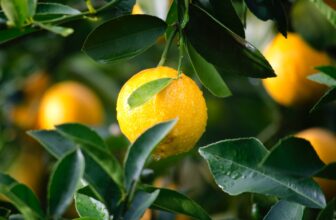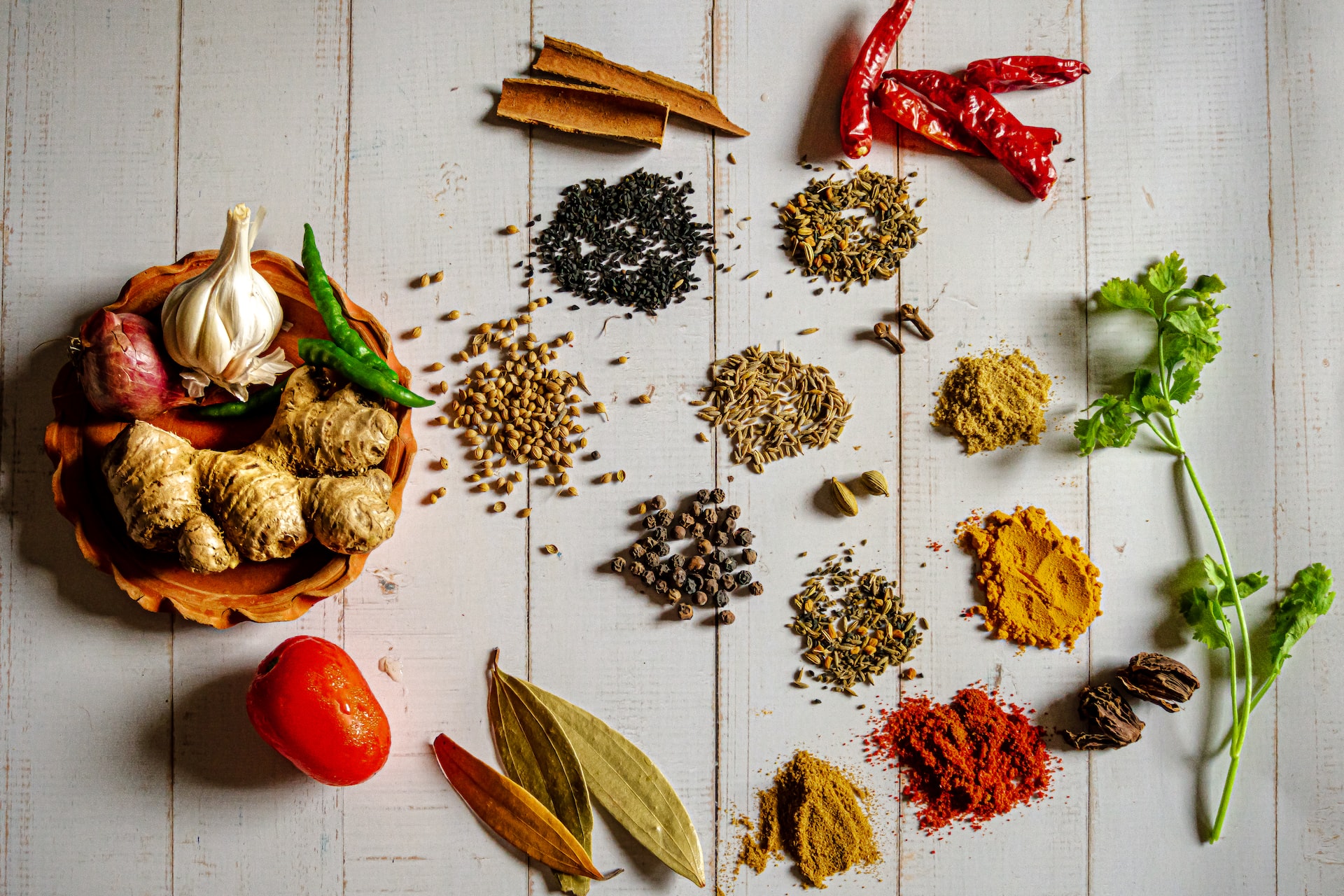
Table of Contents
In most kitchens, spices are an essential element in cooking. They enhance flavors without the addition of sugar, fat, calories, or salt. Chefs, home cooks, and simply foodies all know the importance of spices in the culinary world.
In this article, we’ll be talking about the 8 most popular spices to grow in your garden.
Coriander (Corriandrum sativum)

Coriander can be considered both an herb and a spice. It is one of the most used types of spices in the world, especially in Mexican and South Asian cuisines. The whole coriander plant is edible. The leaves, stems, and even seeds are used in different ways.
Coriander provides a strong and distinct flavor with an appetizing aroma and its lemony, pungent flavor is what makes coriander much loved.
This delicate plant grows approximately 50 cm in height with bright green slender stems and thin, broadly lobed leaves. Coriander is an easy-growing plant with low maintenance and a high yield. Place coriander on your windowsill for the best growth conditions, aesthetics, and accessibility where you can quickly grab some fresh coriander as you cook.
How To Grow Coriander: When planting, seeds prefer fertile, well-drained soil. Seeds will sprout in a week’s time. Watering can be done regularly to ensure the soil is evenly moist. Bright but indirect light and shady places are much preferred to protect the plant from the harsh sun.
Cumin (Cuminum cyminum)
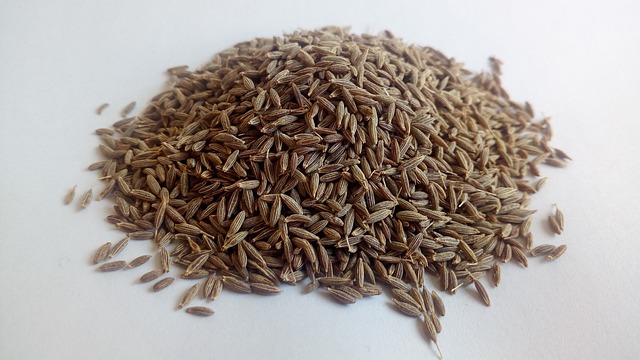
Cumin is a pungent spice with a strong, earthy aroma and a subtle sweetness but a slightly bitter aftertaste. This spice is multi-functional and can be used in the form of a whole seed or a ground spice.
Once planted, the plant grows to a height of 30-50 cm with branched stems of about 20-30 cm tall. Being one of the most popular spices in South Asian, Middle East, and Latin American countries, cumin is best known to complement meat dishes and seasoning hearty dishes such as biriyani.
Cumin is also known to have many health benefits such as detoxification of the body, improvement in digestion, and controlling blood glucose levels.
How To Grow Cumin: Cumin loves warm conditions with plenty of bright sunlight. As cumin is a flowering plant, white-pink flowers bloom which then start forming the brown seeds that can be harvested. These seeds can then be sowed in loose and fertile soil.
Water the plant regularly as hot climates may dry out the soil. Misting is highly recommended to keep the soil moist throughout.
Fennel (Foeniculum vulgare)

Grown for its edible leaves, shoots, and seeds, fennel is used in many Middle Eastern, Italian, and Asian countries. A fennel plant can grow up to a height of 1-2 m and have finely divided threadlike leaves of about 16 inches in length.
All parts of the fennel plant provide a herb, a strong aroma that is ideal for seasoning, and its bulbous stem is usually used as a vegetable in many international cuisines. Fennel is a must-have ingredient in Italian sausages and as a spice rub to season meats and other poultry.
Apart from its use in flavoring dishes, in some parts of the world, fennel is consumed after meals to aid in digestion and as a palette cleanser and breath freshener. This bright green feathery, fern-like appearance will also be a decorative element in your garden.
How To Grow Fennel: Fennel thrives in well-drained, fertile soil. Plenty of bright, direct sunlight is required to help fennel thrive in its natural habitat. Frequent watering is required as the soil may tend to dry out more often. To maintain good moist soil, water your plant when the top inch of the soil seems dry.
Ginger (Zingiber Officinale)

Ginger, a rhizome, is one of the most widely used spices in the world. Ginger is a very versatile ingredient that can be used in various forms; fresh, dried, ground, preserved, pickled, and candied which therefore can be included in many types of dishes, both savory and sweet.
The spicy yet slightly sweet, strongly pungent aroma makes this an essential ingredient for mouthwatering dishes such as rice dishes, stews, and marinades for poultry. Ginger can even be added to beverages such as tea.
Ginger also is packed with many health benefits as it is rich in minerals and vitamins and is also used in traditional medicine. Ginger does not need much space to grow and is easy to grow even indoors if the ideal growth conditions are provided.
How To Grow Ginger: The rhizome can be cut into several pieces with no more than a few inches and make sure that each piece has a plum root on it to grow the shoots. The pieces can be planted in shallow, compost soil and kept in a warm place for shoots to sprout. Once planted, watering should be done regularly to ensure the soil is moist throughout. Indirect sunlight is preferred therefore ginger is a great plant to be grown indoors.
Turmeric (Curcuma longa)
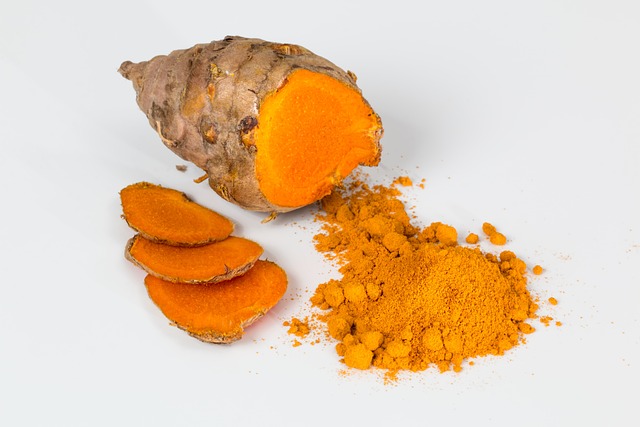
Turmeric is also a rhizome, like ginger, and is an essential ingredient in Asian cooking. The root is usually dried and ground up to be used in the form of a powder. It has a warm, earthy flavor and gives an orange-yellow color to the dish, especially curries, which makes turmeric a must-have element in all your kitchens if you are a curry fan. Turmeric is also known to have medical uses as it is rich in antioxidants and has many anti-inflammatory factors.
How To Grow Turmeric: As with ginger, Turmeric rhizomes can also be cut into sections and planted in a deep pot with fertile and well-drained soil and kept in a warm place. Watering needs to be done regularly to ensure the soil is moist throughout the growing period.
Onion (Allium cepa)
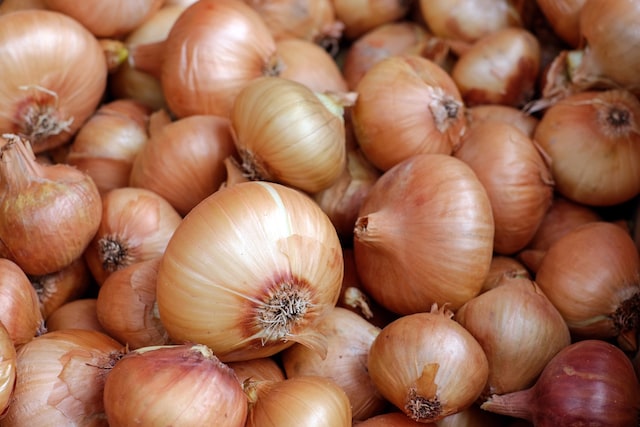
Onions are a bulb and one of the most used spices, which can also be considered a vegetable. Onions can be used both fresh and in dried form and are a must-have ingredient in cuisines around the world.
Onions have health benefits linked to improving bone health, reducing levels of blood sugar, and risk of cancer. It contains antioxidants and anti-inflammatory properties.
Dried, ground onion powder is the spice that is used as a seasoning in many cuisines which ranges from hearty meals such as rice, and spice rubs for meat, to simple cooking such as soups and stews. Onions can be easily grown at homes and can be grown in raised beds and in-ground gardens
How To Grow Onions: Onions require plenty of sunlight and well-drained soil. The plants can be placed 1 inch deep to cover the root with enough soil, leaving the top neck of the plant a little exposed over the soil. Regular watering is necessary to keep the soil moist at all times.
Garlic (Allium sativum)
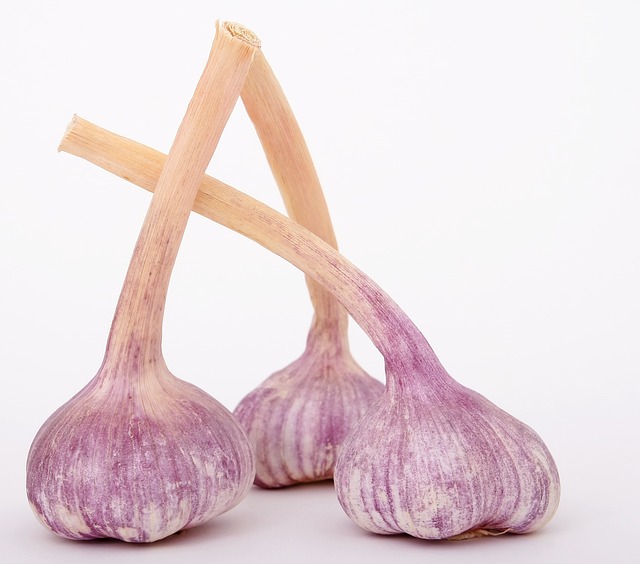
Garlic is a bulbous plant that is closely related to onions. It originates from Central and South Asia. Many cuisines all around the world have garlic as one of the staple ingredients, where the seasoning of dishes such as soups, rice, casseroles, stews, and sauces and the list goes on!
This bulb contains several individual cloves of garlic, enclosed in a thin, white-purple-colored skin. The taste of garlic is quite strong, very pungent, and has a spiciness to it. Garlic has also been shown to have many medicinal benefits such as improving the immune system, helping protect against illnesses such as colds, and heart diseases, and even reducing blood pressure.
How To Grow Garlic: Garlic can be planted and grown easily both indoors and outdoors with a little bit of care. To plant garlic, all you must do is separate the cloves from the bulb and place them 4 to 8 inches apart and about 2 inches deep into the well-drained and moist soil. Provide plenty of bright sunlight as garlic thrives in warm climates with a lot of light.
Mustard (Brassica spp)
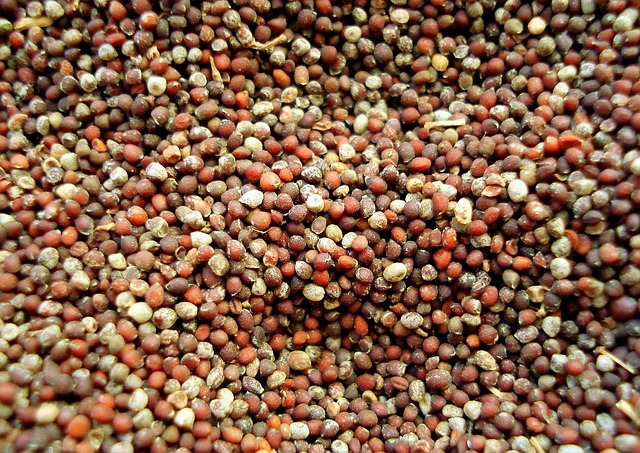
A basic ingredient in most South Asian countries, mustard can be consumed in the form of a ground-up powder or seed. Mustard comes in black, brown, and yellow seeds and is used in a wide range of cuisines depending on the type and form of the mustard used.
Mustard can be sweet spicy to slightly sour. The use of mustard is now widely spread to Western countries, where fresh ground-up mustard can be used to make condiments.
How To grow Mustard: Mustard can be grown indoors or outdoors in your garden. Places with slightly sunny and shady places with well-drained soil are much preferred. Regular watering is required to make sure the soil is constantly wet and not soggy.
While the plant favors cold climates, growing the plant indoors in a pot can also be done.
Wrapping Up
Spices have come a long way in the culinary world and are becoming the most important addition to cuisines all around the world. How about having your own spice garden? From the freshest ingredients picked by yourselves from the plant straight to your dish, you can call it a 100% homemade meal without any doubt.
While there are a huge variety of spices available, these are the most popular types of spices that are widely used around the world and the types that can be easily grown in your own home with the least maintenance. If you have decided on what spice you would want to grow, let’s get started right away!






